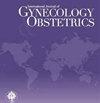Effects of gender-affirming hormone therapy on lower urinary tract symptoms and sexual function among transgender individuals
Abstract
Objective
Gender-affirming hormone therapy (GAHT) includes estrogen preparations and androgen inhibitors for transgender women, and testosterone preparations for transgender men. The aim of the study was to investigate possible effects of GAHT on lower urinary tract symptoms (LUTS) and sexual function among transgender individuals.
Methods
Fifty-one transgender men and 47 transgender women were prospectively recruited. Four validated female questionnaires (Bristol Female Lower Urinary Tract Symptoms [BFLUTS] questionnaire, the Medical, Epidemiologic, and Social aspects of Aging [MESA] questionnaire, Urgency, the Severity and Impact Questionnaire [USIQ], and the Female Sexual Function Index [FSFI]) and two validated male questionnaires (International Prostate Symptom Score [IPSS], and the International Index of Erectile Function [IIEF]) were used to assess LUTS and sexual function among transgender men and women, respectively, before and during GAHT. Follow-up was performed over a period of 3–12 months.
Results
Thirty-four transgender men (mean age 24.4 ± 7.6 years) and 31 transgender women (mean age 29 ± 8.7 years) completed all questionnaires, before and during GAHT. Testosterone treatment was associated with a statistically significant improvement in sexual desire among transgender men, as reflected in the FSFI questionnaire (4.5 ± 1.2 vs. 3.6 ± 1.3, P = 0.002). None of the three LUTS questionnaires showed statistically significant changes during the treatment with testosterone preparations. Estrogen treatment was associated with a statistically significant decrease in erectile function among transgender women, as reflected by the IIEF questionnaire (9.0 ± 7.2 vs. 14.1 ± 11.1, P = 0.012). No significant changes were found in LUTS during the treatment with estrogen preparations, except for a slight worsening of nocturia (2.1 ± 1.8 vs. 1.1 ± 1.4, P = 0.009).
Conclusions
GAHT was not found to be associated with significant LUTS in both transgender men and women. Nevertheless, some effects on sexual function were observed, mainly a decrease in erectile function among transgender women and an increase in sexual desire among transgender men.

 求助内容:
求助内容: 应助结果提醒方式:
应助结果提醒方式:


